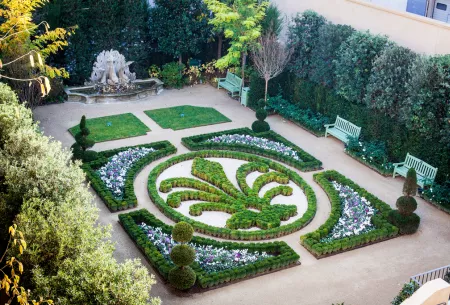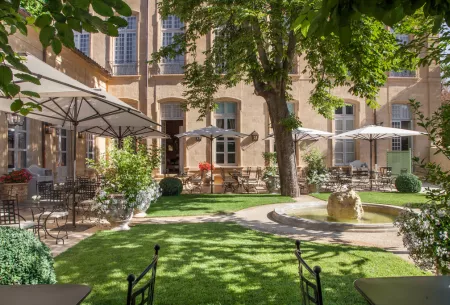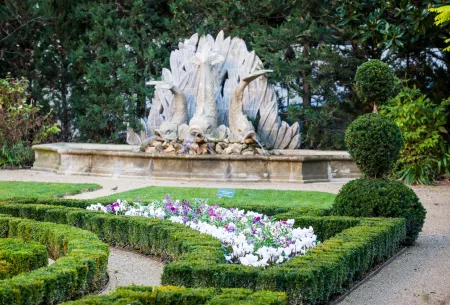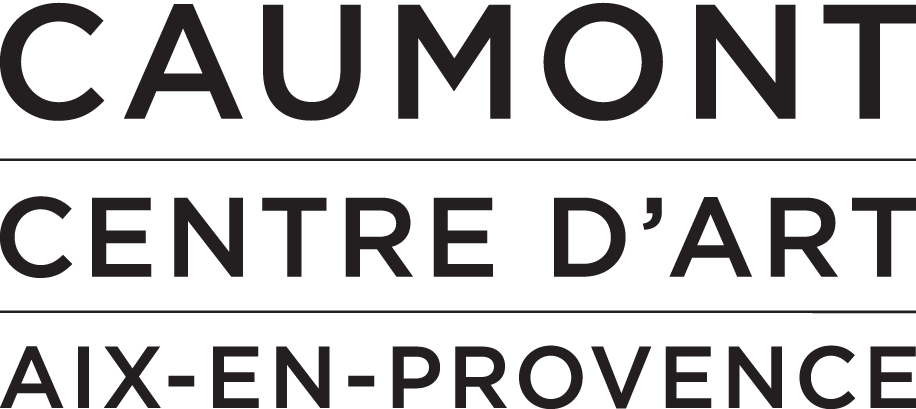The art center is open every day from 10 a.m. to 6 p.m., including January 1st.
Gardens

When François de Réauville decided to build his private mansion in 1715, he commissioned the architect Robert de Cotte to draw up plans for the garden of the Hôtel de Caumont in the classic style of the period: immaculate geometric lines, pursuit of symmetry, open perspective, water parks... all hallmarks of so-called “French gardens”.
Culturespaces undertook the reconstruction of the upper and lower gardens in the spirit of the venue, with the help of archives containing the original plans made by Robert de Cotte. In these gardens flourish plants typical of mansion gardens at Aix in the eighteenth century: among the most common species are laurel and boxwood. There are also acacia (false-acacia from North America, established in France in 1601 by Jean Robin), cypress, yew, lime tree, lilac, red and silver maple, and other plants that are emblematic of the region: the green oak, the agapanthus and the hackberry from Provence. Hornbeam, mulberry, ivy and magnolia complement this fine diversity of plants.

The upper garden
The upper garden parterre features a lawn punctuated with round boxwood shrubs around a circular ornamental pond.

The lower garden
It opens into a pleasant view over the garden below. The lower garden is surrounded by an evergreen oak and yew double hedge. They frame boxwood hedges modelled after the original pattern designed by Robert de Cotte for the mansion. Beyond, the eye is drawn to the Fontaine des Trois-Tritons (Fountain of the Three Tritons), sculpted out of Estaillades stone. These tritons, like dolphins, are mythical creatures and the allies of the gods, and particularly Neptune, god of the sea.
